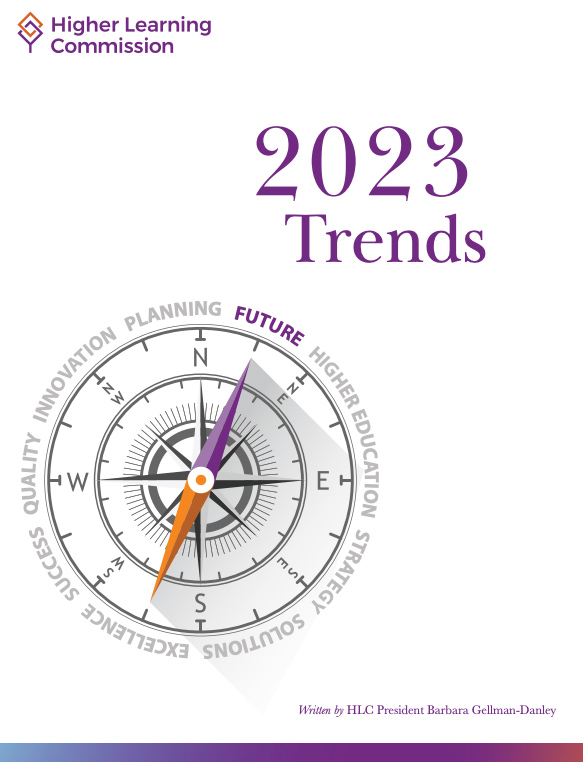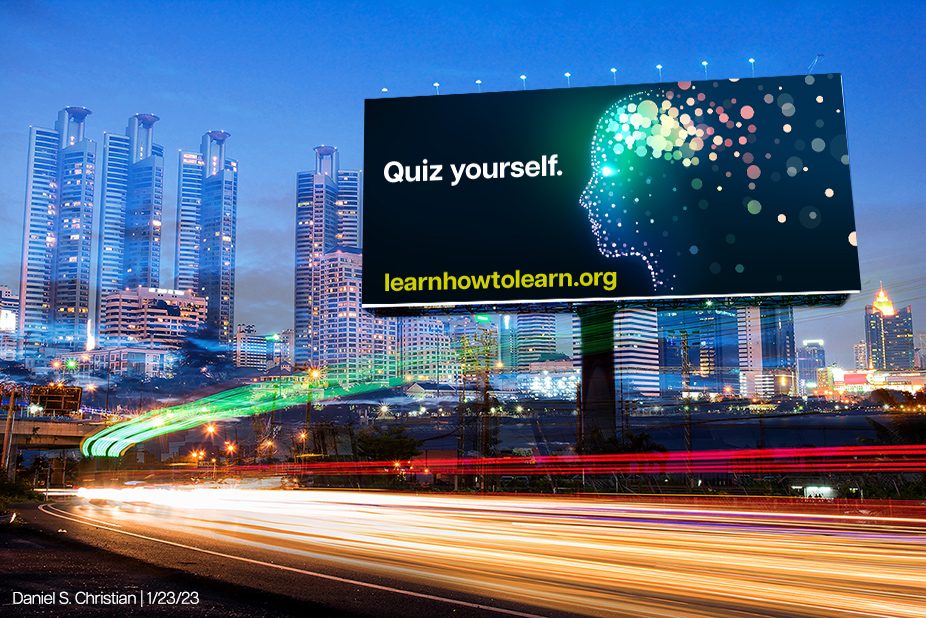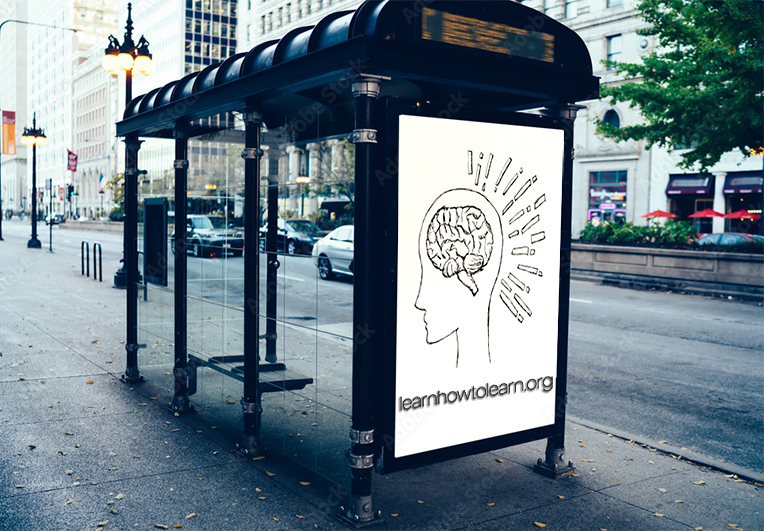Which trends are on your radar? Fantastic resource for #HigherEducation about the changing ecology: Higher Learning Commission’s Annual Trends Report. https://t.co/Lzgph6u3lP
— Melanie Booth, Ed.D. (@boothmelanie) March 25, 2023
A Spotify model of personalised higher education — from timeshighereducation.com by Michael Rosemann and Martin Betts
With technology offering greater potential for a personalised approach to higher education, Michael Rosemann and Martin Betts look at what universities can learn from the ubiquitous music platform Spotify
Excerpts (emphasis DSC):
Selection, or the P(upil)-route as educationalist Dan Buckley calls it, means personalisation driven by the learner. This is the fastest-moving form of personalised learning. Not only do students benefit from true omnichannel education – choosing between face to face and online – they also independently navigate the internet’s resources and online databases in search of the knowledge that will help them to achieve their learning targets.
…
Automation, or the A-route, is the new enabler of personalised learning. As with personalised medicine, finance or entertainment, education is starting to use digital technologies to unlock new models of tailored engagement. While for most universities, AI-driven, personalised education is not an option as the required capabilities are missing and significant investments would be necessary, there is a range of alternative forms of automated personalised learning. For this, we look to providers outside the sector for inspiration.
Here are Spotify-inspired ideas that universities ambitious enough to provide personalised learning could explore.
From DSC:
Rosemann & Betts use the term “omnichannel education” — I like that term. Very nice.
60% of Higher Education Leaders Say Continuing Education is Not Well-Integrated into Institutional Portfolio Offerings — from finance.yahoo.com
Despite Belief that CE Programming Positively Affects Enrollments in Traditional Programming, CE Units Remain Under-Resourced
Excerpt:
TORONTO, March 22, 2023 /PRNewswire-PRWeb/ — While 71% of senior leaders within higher education institutions support scale and growth of continuing education (CE), more than half (57%) feel that their CE units are understaffed to execute on institutional goals. This is according to the 2023 State of Continuing Education report. Published by higher education engagement platform leader Modern Campus, in partnership with the Canadian Association for University Continuing Education (CAUCE), The EvoLLLution, and the University Professional and Continuing Education Association (UPCEA), the study explores professional, continuing, and online (PCO) unit program offerings, institutional support and capabilities, perceptions of the competitive landscape, and continuing education collaboration and integration within the larger institution.
“The future higher education institution is rooted in CE, but delivering on that promise requires both strategic and operational support from the institution,” said Amrit Ahluwalia, senior director of content and strategic insights at Modern Campus and editor-in-chief of The EvoLLLution. “It is our sincere belief that the findings of this study will enable CE professionals to advocate for greater resources and allow them to be seen for the critical functions that their portfolio plays for institutions and learners alike.”
DC: What a great, smart move! I wish more schools of education would do this!
“TCU is integrating the science of learning into undergraduate teacher education.”https://t.co/Jvd69l37vv#studentteaching #schoolsofeducation #learningscience #cognitivepsychology #learning
— Daniel Christian (he/him/his) (@dchristian5) March 22, 2023
DC: Other potential curricula would involve instructional design and instructional technology (which now includes using AI).
Designing Virtual Edtech Faculty Development Workshops That Stick: 10 Guiding Principles — from er.educause.edu by Tolulope (Tolu) Noah
These ten principles offer guidance on ways to design and facilitate effective and engaging virtual workshops that leave faculty feeling better equipped to implement new edtech tools.
Excerpt:
I share here ten guiding principles that have shaped my design and facilitation of virtual synchronous edtech workshops. These guiding principles are based on lessons learned in both my previous role as a professional learning specialist at a major technology company and my current role as a faculty developer at a university. In the spirit of James M. Lang’s book Small Teaching, my hope is that the principles shared here may prompt reflection on the small yet impactful moves academic technology specialists, instructional designers, and educational developers can make to create virtual learning experiences whereby faculty leave feeling better equipped to implement the edtech tools they have learned.
Somewhat relevant/see:
Evidence-Based Learning Design 101 — by Dr. Philippa Hardman
A practical guide on how to bake the science of learning into the art of course design
Excerpt:
As I reflect on the experience and what I’ve learned so far, I thought I’d share a response to the question I probably get asked most: what process do you use to go from an idea to a designed learning experience?
So, let’s do a rapid review of the four step process I and my bootcamp alumni use – aka the DOMS™? process – to go from zero to a designed learning experience.
Challenging ‘Bad’ Online Policies and Attitudes — from insidehighered.com by Susan D’Agostino
Academic and industry leaders spoke with conviction at the SXSW EDU conference this week about approaches that impede educational access to motivated, capable learners.
Excerpts:
“It’s driven by artificial intelligence,” Barnes said of IBM’s training and reskilling effort. “It’s a Netflix-like interface that pushes content. Or an employee can select content…
…
The leaders discussed the ways in which colleges, policymakers, and employers might work together to help more Americans find or advance in viable employment, while also addressing the workforce skills gap. But some “bad” policies and attitudes about online learning undermine their efforts to work together, expand access and deliver outcomes to motivated, capable learners.
“Employers were saying, ‘We have job openings we can’t fill, and we want to work with the education system, but it is so unbelievably frustrating because they’re very rigid, and they don’t want to customize to our needs,’” Hansen said. These employers sought workforce training that could produce a pipeline of learners-turned-employees, and Hansen said they told him, “If you can do that, I’ll pay you.”
As Colleges Focus on Quality in Online Learning, Advocates Ask: What About In-Person Courses? — from chronicle.com by Taylor Swaak
Excerpt (emphasis DSC):
As colleges’ online catalogs grow, so too has the push to develop standards of quality for those courses. But are in-person classes getting the same attention?
If you ask many online-education advocates, the answer is “no.” And the solution, many say, is for colleges to adopt standards and policies that set consistent expectations for quality across all courses, whether they’re remote or in a classroom.
While decades of research and the pandemic-spurred expansion of online learning have helped demystify it, and build confidence in its efficacy, these advocates say the misconception lingers that remote education is inherently lower in quality than instruction in the classroom. And that stigma, they say, puts a magnifying glass to online ed, while largely leaving in-person classes to business as usual.
The focus instead, Simunich said, should be on a big-picture question: Is this a high-quality learning experience for students?
From DSC:
These are great points. I find them to have been very true.
Reflections of a College Adjunct After 31 Years — from insidehighered.com by Stephen Werner
We’ve proven over and over that there’s enough work to give many of us full-time positions, writes Stephen Werner, but things are moving in the opposite direction.
Four Pieces of Advice (emphasis DSC)
In closing, I offer the following recommendations:
- See the big picture. We adjuncts are workers in the gig economy. We are part of the new normal where so many jobs are on-demand, temporary work, with few or no benefits and no long-term security. Even with our M.A.s and Ph.D.s, we have much in common with workers at all levels, including the lowest-skilled workers.
- Make a serious effort to meet and talk to other adjuncts. …
- Unionize! Organize with your fellow adjuncts! …
- Start saving for retirement. …
The fact is that college and universities are totally dependent on us. They know it. We adjuncts need to act like we know it, too. We need to overcome our isolation and work together to have a voice.
How Mega-Universities Manage to Teach Hundreds of Thousands of Students — from edsurge.com by Robert Ubell (Columnist)
Excerpt:
One key difference at SNHU is how it hires faculty, relying on an academic army of about 8,000 adjuncts who earn $2,000 per semester for teaching an undergrad course and $2,500 for a grad course. Reliance on adjuncts, especially in online instruction, is a national trend. Today, gig faculty occupy about three-quarters of all U.S. college instructors. But Southern New Hampshire and other online operations depend even more on contingent labor than most of their traditional peers.
For colleges to depend entirely on an Uber-style instructional workforce may be financially prudent, but I argue it’s academically risky, with little continuity and no permanent faculty. It’s also exploitative, with instructors ending up in precarious work arrangements without living wages and benefits.
First Person: Why college matters for people serving extreme sentences — from opencampusmedia.org by Rahsaan “New York” Thomas
Excerpt:
For incarcerated people, the quality or success of a college program is often measured by recidivism rates. By that standard, Mount Tamalpais, formerly the Prison University Project, is a success. Its students had a recidivism rate of 17 percent compared to the 65 percent recidivism rate for the California Department of Corrections and Rehabilitation as a whole, according to a 2011 program evaluation.
Personally, I see education as the key to my success from behind bars. After getting sentenced to a term beyond my life expectancy I needed a path to redemption in the eyes of my mother, my sons, and society that didn’t involve going home. I came up with becoming a writer because my voice was the one part of me that was still free.














